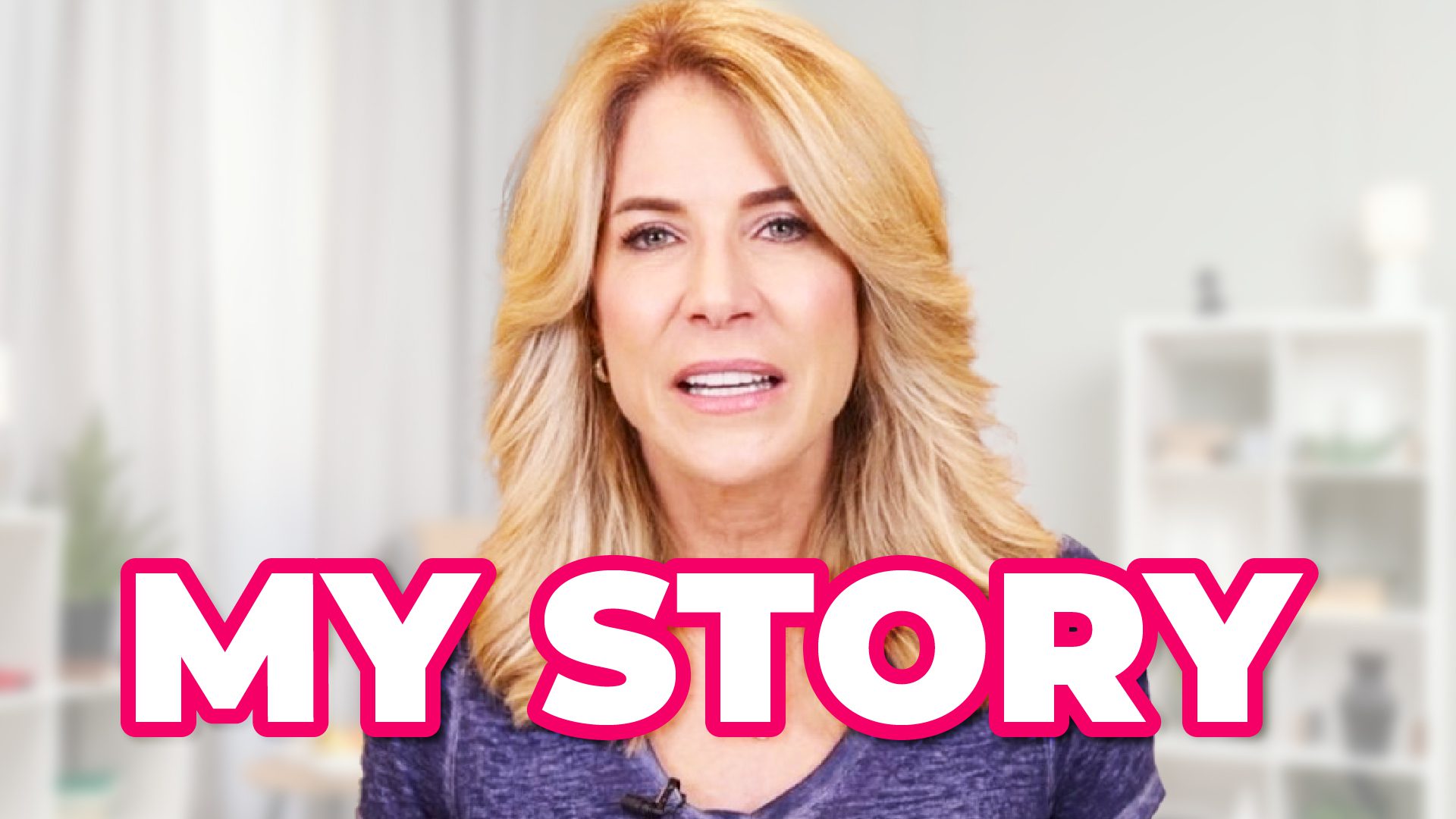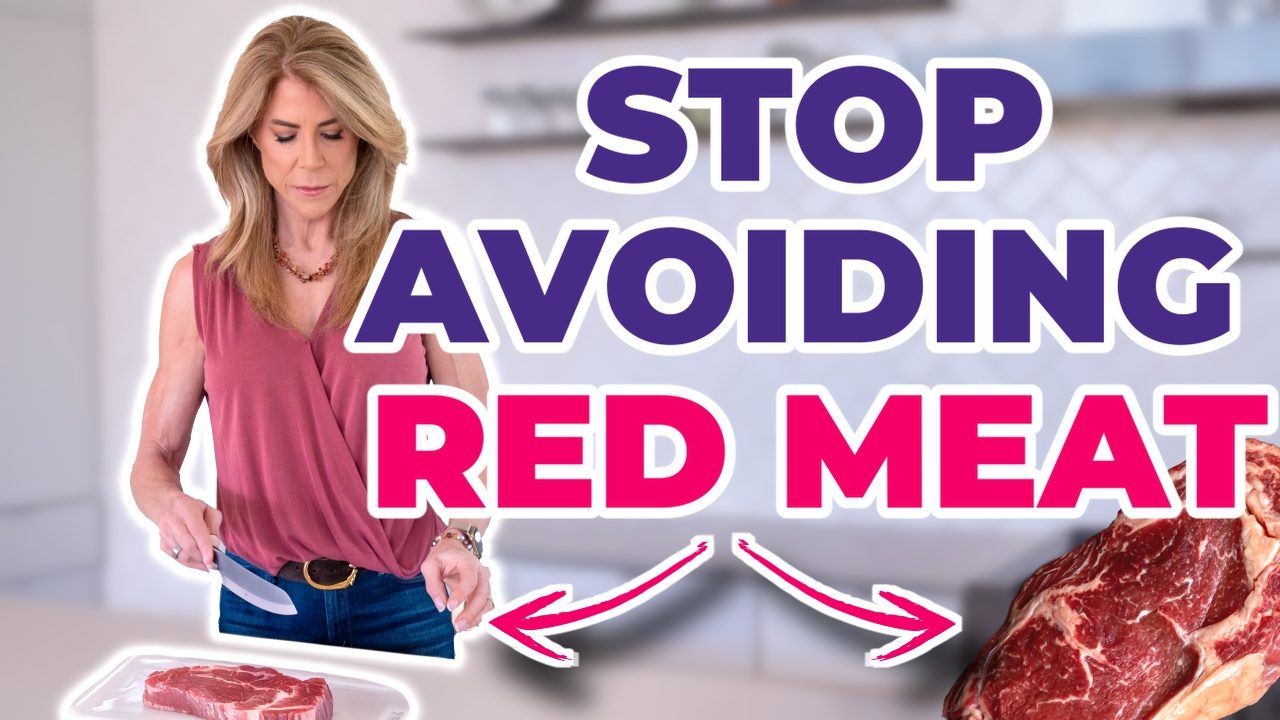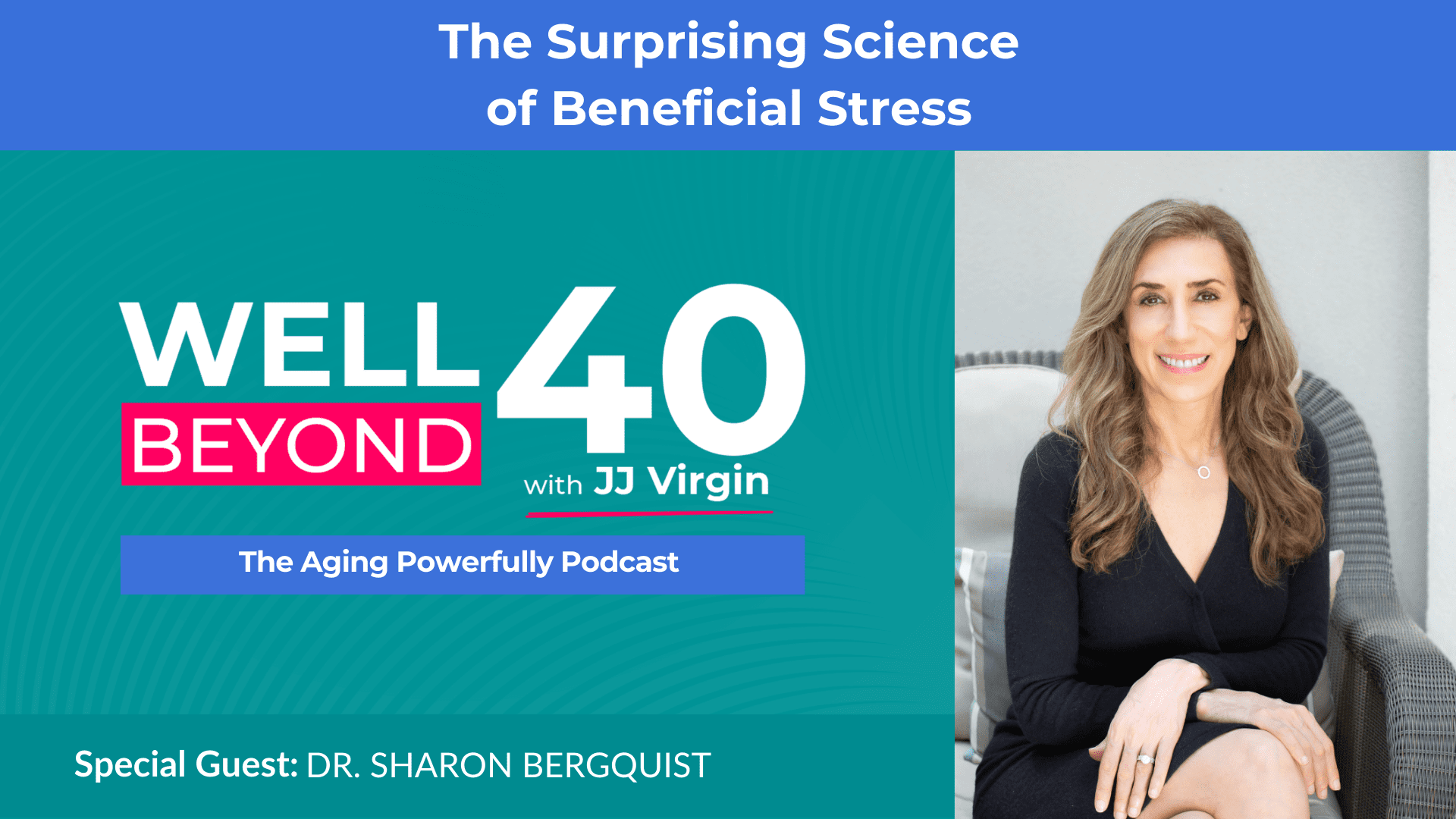The Nutrition and Habits That Helped Me Stay Strong on Bed Rest and Beyond
I had big plans for my 60th birthday. A full hysterectomy wasn’t one of them. But due to an unexpected diagnosis, I ended up having one anyway.
The good news? Thanks to some key habits, it was easier than I dreamed possible.
In this episode, I’m sharing everything I did to prepare my body and mind for surgery and healing, so I could accept this health challenge, minimize muscle loss during recovery, and come back strong.
Timestamps
00:01:01 – My unexpected diagnosis
00:03:59 – The first thing I did to prepare for surgery
00:04:55 – My plan to minimize muscle loss during recovery
00:06:51 – I didn’t realize this was going to happen
00:08:54 – How I prepared physically
00:11:24 – Here’s what I’m doing 3 months out from my hysterectomy
Resources Mentioned in this episode
Watch the FULL VIDEO on my YouTube Channel
Download my FREE resistance training cheat sheet
Read my book, Sugar Impact Diet
Learn how foods cause leaky gut in The Virgin Diet
Get a Cooch Ball
Reignite Wellness™ All-In-One Shakes
Reignite Wellness™ Clean Creatine Powder
Learn about Sunlighten Infrared Sauna
Use promo code JJVIRGIN when requesting pricing information for $600 off
Reignite Wellness™ Amino Power Powder
Reignite Wellness™ Collagen Peptides Plus
Reignite Wellness™ Magnesium Body Calm
Belifu Dual Channel TENS Electrical Muscle Stim
TRX Training: Free Shipping on all orders $99+
Shop Xiser use code jjvirgin for $30 off your next order
Get a hormone panel from YourLabwork (Dutch Test)
Video: BEST Strength Training Routine for Women Over 40 (+Free Workout Plan!)
ATHE_Transcript_Ep 620_How I Prepared & Recovered From My Hysterectomy
JJ Virgin: [00:00:00] I’m JJ Virgin, PhD dropout, sorry mom, turned four time New York Times best selling author. Yes, I’m a certified nutrition specialist, fitness hall of famer, and I speak at health conferences and trainings around the globe. But I’m driven by my insatiable curiosity and love of science to keep asking questions, digging for answers, and sharing the information I uncover with as many people as I can.
And that’s why I created the Well Beyond 40 podcast to synthesize and simplify the science of health into actionable strategies to help you thrive. In each episode, we’ll talk about what’s working in the world of wellness, from personalized nutrition and healing your metabolism, to healthy aging and prescriptive fitness.
Join me on the journey to better health, so you can love how you look and feel right now and have the energy to play full out at 100.[00:01:00]
I was so fired up for my 60th birthday, I was in the best shape of my life and planning big things for the next decade. It is going to be my decade of expansion. So needless to say, I was not expecting the results from a simple vaginal ultrasound to lead to needing a DNC and then a diagnosis of endometrial intraepithelial neoplasia, EIN, which is a precancerous lesion of the endometrium associated with a 40 percent risk concurrent endometrial cancer at the time of a hysterectomy.
Oh man. Now. This was like one doctor appointment after the next doctor appointment. We’re like, everything’s going to be okay. Well, maybe it’s going to be okay. Well, I’m like, holy smokes. So they’re like, you gotta get a full hysterectomy. So I went and saw a couple of doctors and then I settled into the reality of the surgery and the potential health challenges.[00:02:00]
Now, if you’re facing a surgery, especially this one. I’m doing this so that hopefully it can help you. Now, I’ve got to say, you got to talk to your doctor. Of course, I can’t give medical advice, but what I’m going to share with you is how I prepared and recovered from this hysterectomy because now looking back, honestly, it was a breeze.
And you usually don’t hear that about hysterectomies. So first thing that started to happen and why I had to have it was I noticed a little spotting and I went to the doctor and then they did an ultrasound, then they did another ultrasound, then they did a DNC. So it kept going on until I got that diagnosis.
And when we started to unpack, like, you know, why would this happen? Why would I get this thickening? Honestly, no clue. I am adopted. And the one thing I do know about my birth mom is that she’d had a similar diagnosis, but that’s all I’d known. And all I knew from that was that she got the [00:03:00] diagnosis, that she had uterine cancer, then she went off and meditated at Esalon and then she was fine.
So that’s all I know. So who knows? But here’s what I did to prepare. What was actually amazing about all of this was I discovered the EIN diagnosis literally days before I was walking into a Dr. Joe Dispenza retreat with a bunch of my friends who were active meditators and also physicians. So I go to that Dr.
Joe Dispenza retreat. And it was bizarre. It was a four day advanced followup. And it seemed like everything he talked about was the results that they were getting with uterine cancer. And so I’m thinking, well, one of them must’ve told him. And I was sitting with him at dinner the last night and he goes, no, I didn’t know.
I go, you kept talking about all the research and how much the research of meditation was supporting, you know, getting a clear diagnosis of being fine with uterine cancer, and he goes, yeah, you’re going to be fine. So then I [00:04:00] did some healing circles. So that was the first thing that I did. Was I started to actively see myself healed, fine, and do some active meditation.
And we’ll put into the notes how you can get more involved with Dr. Joe Dispenza’s work. But basically I had big belief that the thoughts create. So I just saw myself healed. I saw myself strong. I saw myself being able to do all the things I wanted to do for decades on. So that was the first thing, that mental preparation.
And I cannot underscore how important that was. And I also set this up as a challenge. Now I’ve had, I blew my knee out when I was 17. So I’ve had to have like five major knee surgeries complete with a knee replacement and a hip replacement because of all of that. So I’ve had my share of surgeries and I always approach them as a physical challenge and I get in the best shape possible for them.
So that’s what I did here too. I knew that what they told me is after you have a hysterectomy, you’re not supposed to [00:05:00] lift anything over 10 pounds for six weeks. I’ll tell you how I handled that. So what I decided to do was get as strong as physically possible before so that I wouldn’t lose much. So I literally went into the gym and massively cranked up my resistance.
I started to go even harder and I really started to work my core as well. Along with that, I started using something called a cooch ball. Which is a pelvic floor trainer. So I thought, you know what? I need to get everything in me as strong as possible. So I started sitting on this cooch ball every day as well.
So that was the next thing. And I also, of course, was doing my high intensity interval training. Then I worked on my nutrition. Now, these are all things that I’ve been doing anyway. I just made sure I was super duper consistent. I’ve always been consistent. With the way that I eat and making sure that I get the optimal amount of protein.
I also have been taking creatine. I started that probably last year. It’s one of the most [00:06:00] important things that I’ve added into my supplement stack. So I made sure I stayed on that creatine. I made sure that I was on annatto tocotrienols. But the big one was to make sure that I was actively using DIM to help detoxify the bat estrogens along with doing saunas because saunas help you detoxify as well.
So. Those were the things that I was doing. And then I went in and did surgery. Okay. So the first three days after surgery, I will admit, I came home from surgery. I got home at about noon and I actually had to be on a conference call. I told them, I don’t know if I’m going to be on it, but I was fine. I was on the conference call at 1.
30. And the first three days, I took it pretty easy, but I made sure that I was getting up and moving because that was super important. I will tell you those first three days, I was really tired. But the thing I didn’t realize was going to happen, and I didn’t hear about this until afterwards. Maybe they don’t want to tell you until afterwards, cause this [00:07:00] was the hardest part, was that they pump you full of gas and that gas takes.
A couple of months to really go away. And the first week or two are the worst. Now he told me it was going to be problematic, but I didn’t know it was going to be problematic that long, where you look kind of like you swallowed a bowling ball. So that was not very fun the first couple of days. So as I was going through the first couple of days, what I did was make sure that I was getting what I needed nutritionally, but I was eating smaller meals, so I ate four meals instead of three and smaller because it was just tough because of the gas.
What I made sure that I did was take essential amino acids, and I did that twice a day. So what I really wanted to make sure of is when you are on bed rest, you become more insulin resistant and you start losing muscle. So what I wanted to make sure is I was doing everything I could to aid healing and not lose muscle.
So I took essential amino acids, I kept my creatine going, and I upped my protein. Normally I do one gram of protein per pound of body weight. I took [00:08:00] it to one and a half grams of protein. And I also made sure that I was doing my bone broth protein shake every day because I’m going to get the collagen in there from that as well.
Bone broth proteins about 80 percent collagen. So twice a day, essential amino acids, one and a half grams of protein per pound of target body weight. This is what I was doing with one of those servings at least was a bone broth collagen blend. I also was getting in my creatine, five grams. I was using curcumin.
I waited a couple days to start in on some of these things because these things can increase bleeding. So I gave myself a little bit of time first and then I went into curcumin to help reduce inflammation and fish oil. But again, I didn’t do those right away. I also used magnesium and vitamin C because you can get a little constipated from all this stuff and some gas pills because it was really hurting.
So that was what I did nutritionally. Now physically, here’s some of the other things I did. [00:09:00] I started doing red light and I’m fortunate to have a Juve J O O V red light therapy unit at home. You can also use a little red light therapy unit because you can just put it straight over your abdomen. But I used red light every day to help reduce the inflammation and support healing.
I was getting into the sauna so that I could detox out the anesthesia. Couldn’t do a cold plunge because you can’t get into a bath for six weeks. But I could do the sauna. So that was another thing that I was doing. And then I went back after a couple days and started doing the cooch ball again. Now, the big thing they tell you is that you can’t lift over 10 pounds because they don’t want you to tear the stitches.
When I talked to the doctor about what you couldn’t do, he goes, I really don’t want you to trigger what’s called the valsalva. So they don’t want you using your deep abs. They don’t want you straining so that you would tear these stitches that they’ve put inside you. So what you can do instead is you can use something called blood flow restriction bands, which allow you to work out with much lighter weights, like [00:10:00] 10 pounds, and still work your muscles and fatigue your muscles.
Another thing you can do is electrical muscle stim. What I did was I used the TRX machine and I just moved my body weight. Through movements to get started. And I made sure that I wasn’t doing anything. I didn’t use pain pills so I could feel it. And I wasn’t doing anything that was making me like clench my abs and really work through here.
But I just did simple body weight movement. And then I did walking and my different cardio at home. I have a Peloton bike and I have a Stairmaster because he said any of the cardio stuff was fine. So I made sure I kept moving because one of the things that can happen with bed rest is that in just a week, you can become insulin resistant, right?
That is where your insulin’s higher than it should be. And that basically is going to make it very hard for your body to burn fat and you start to lose muscle. So I want to make sure none of that happened to me. And so again, a lot of body weight exercise, and [00:11:00] I will tell you that I was out riding bikes and walking within three weeks outside.
Doing a lot of cardio, I didn’t find any issues with that and doing a lot of work with body weight and gradually increasing the weights based on what I could tell through my making sure I wasn’t using my abs. At the end of six weeks, I went straight back up to full strength. So really didn’t lose anything from any of this stuff.
Now that I am three months out, I’m going to do a follow up on all my hormone labs. So I’m going to do blood labs and a Dutch test. And I will also do another DEXA scan just to make sure that I’ve held onto my muscle. Since I do DEXA scans every six months, I correlate them at home. With my Tanita scale, my full body Tanita scale at home and a tape measure.
And I can tell my weight’s the same, what everything says at home in terms of body fat’s the same. So it looks like everything managed to stay the same, which is what I was really looking for. The big thing that we have to pay attention to as we age. Is not losing muscle. Now, the big thing I have to say is, [00:12:00] of course, this is what I did.
And so you always have to talk to your doctor. You want to be super careful with any of these things, with any type of lifting, again, because of stitches, but that’s where I went into body weight movement and a lot of cardio movement and added and started to add in some hit. So deal is, whether or not you have surgery coming up.
You’re going to want to develop a solid strength training routine to help better prepare and recover from life’s challenges. Cause you never know when something’s going to happen, whether you’re going to have to have an operation or an illness or an injury, you want to go in as strong as possible, right?
So if you start making fitness a regular part of your routine right now. That future self is going to be so thankful. And to make it simple for you, I walk you through my resistance training routine in this next video, and you’re going to want to make sure that you download the free cheat sheet that has all my home gym essentials, plus an eight week workout plan designed for women.
Over 40 and that’s at [00:13:00] jjvirgin.com/power. Be sure to join me next time for more tools, tips, and techniques you can incorporate into everyday life to ensure you look and feel great. And more importantly, that you’re built to last and check me out on Instagram, Facebook, YouTube, and my website, jjvirgin. com and make sure to follow my podcast. So you don’t miss a single episode at subscribetojj.com. See you next time.
Hide Transcript

 Subscribe to our show
Subscribe to our show 



